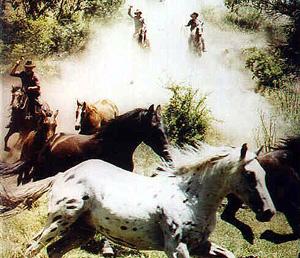Australian Brumby
N/A
Sun, 17th November, 2024 - 8:40 pm GMT
Sponsor Ads:

Alternative Name
N/ABasic Info
Brumbies are rarely of consistent size, conformation or color. This is because domestic mares may escape and join feral horse herds. Also, they were originally of mixed type, including draught and thoroughbred
Health
N/AHabitat
N/ABehavior
Brumbies are viewed as both a pest and a resource. They can cause damage to fences, overgraze cattle pastures, drink and foul water supplies, and make cattle mustering more difficult. They may also mate with domestic mares, and carry and pass on diseases. Their usefulness in Austalia has been as meat, hair (for musical instruments, brushes, upholstery), and tourism/recreation. They can be captured and used as replacement stock horses, but demand is low. When the weather is dry, Brumbies may make water available by pawing at sandy creekbeds, providing water for wildlife and cattle as well as themselvesOrigin
AustraliaHistory
Australia’s first horses arrived here in 1788. Irregular shipments followed that initial cargo. Because of the conditions the horses lived under, only the fittest survived. Some horses died during the voyages. When horse racing was recognized as a sport in 1810, good quality thoroughbreds were imported from England to Australia. It is thought that the name Brumby for Australian feral horses is thought to have been derived from a James Brumby who arrived on the Britania in 1791. James Brumby, born in Scotton Lincolnshire, was a soldier with the New South Wales Corps, he was also a farrier and it is thought that he was responsible for some horses in the early Australian Colony. When James moved to Tasmania in 1804 it is thought that he left some horses in New South Wales. Locals asked who owned the horses, "they are Brumby's" was the reply. Whilst there is some uncertainty as to the origin of this name for horses the above appears the most certain route to their naming The first horses were used for farm work, and contributed to the opening up of Australia’s pastoral land. Explorers used horses and bullocks for transport. Horses were later bred for the remount trade. The low number and quality of fences, and infrequent musters, meant that many horses escaped. Some horses were also abandoned as machinery took over many of their tasks. Both groups of horses became feral.Common Foods
grassSponsor Ads:
A liberalism incapable of fiscal self-discipline brings about a radical conservatism conspicuous for its selfishness and insensitivity. -- Unknown
Australian Brumby
Coded by: BGID® | ALL RIGHTS RESERVED Copyright © 2000-2024
Disclaimer | Privacy | Report Errors / Contact | Credits








 Politician, US Vice President and President of the USA - Joseph Robinette Biden Jr.
Politician, US Vice President and President of the USA - Joseph Robinette Biden Jr.  President of the United States of America - Real Estate mogul, Pageant owner and now one of the most controversial men in political history.
President of the United States of America - Real Estate mogul, Pageant owner and now one of the most controversial men in political history.  versus
versus  Russia: 'The Evil Empire'? Are they all that bad or is it just the USA trying to portray Russia as bad because they are a world power with land bigger and a society very different from the USA ideal?
Russia: 'The Evil Empire'? Are they all that bad or is it just the USA trying to portray Russia as bad because they are a world power with land bigger and a society very different from the USA ideal?  Global warming has been in and out as the "latest" hot topic for many years. It is, according to modern scientists, the result of man-made industrial pollutants, clearing forested areas, agriculture, etc. But now they are thinking it started way before the Industrial Revolution...
Global warming has been in and out as the "latest" hot topic for many years. It is, according to modern scientists, the result of man-made industrial pollutants, clearing forested areas, agriculture, etc. But now they are thinking it started way before the Industrial Revolution... 
 Corona virus
Corona virus 
 Users with wide screen monitors can benefit from more content on every page.
Users with wide screen monitors can benefit from more content on every page.